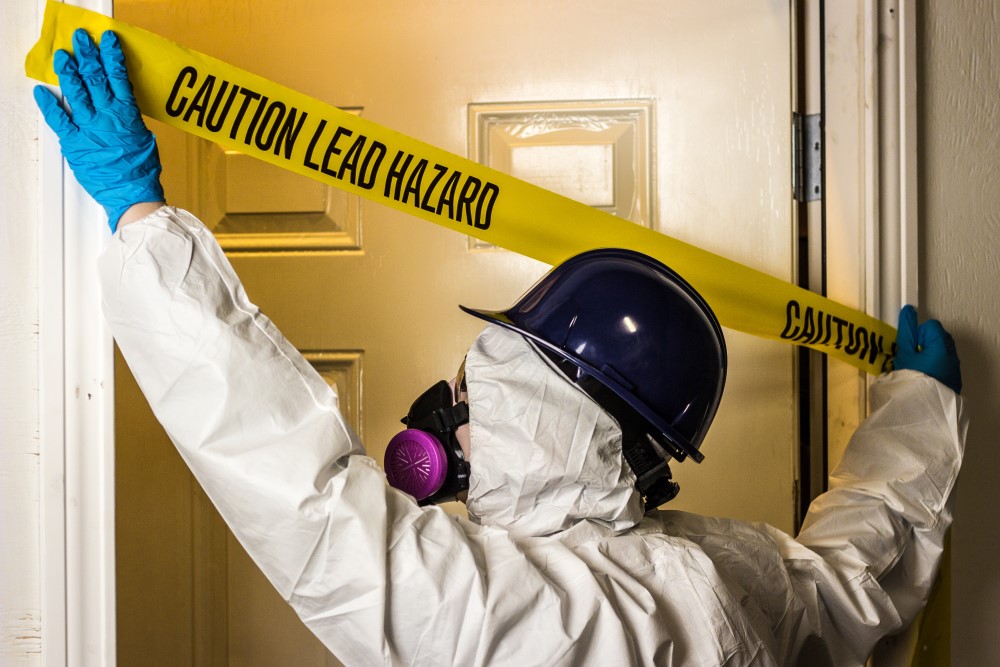
Copyright: D Townsend
NMHC and NAA seek clarification of lead testing requirements for target housing and child-occupied facilities. We have recently received several inquiries about lead testing including questions which suggest that HUD is no longer requiring compliance with Performance Characteristic Sheets (PCS) in the context of lead testing. This seems improbable as testing without a standard would be inaccurate and we wanted to check with you to determine if our understanding of the text found in Chapter 7 of the HUD Guidelines (2012) is correct:
“1. XRF Performance Characteristic Sheet An XRF Performance Characteristic Sheet (PCS) defines acceptable operating specifications and procedures for each model of X-Ray Fluorescence (XRF) lead-based paint analyzer. An inspector must follow the XRF Performance Characteristic Sheet for all inspection activities. XRF PCSs are available from the National Lead Information Center Clearinghouse or through the HUD website at http://www.hud.gov/offices/lead/lbp/hudguidelines/allpcs.pdf. If an XRF analyzer does not have a PCS, or if it is not used, or if the data are not analyzed, in accordance with its PCS, the actions undertaken with it are neither a lead-based paint inspection nor paint testing.” (p7-10)
“F. XRF Performance Characteristic Sheets and Manufacturer’s Instructions When an XRF instrument is used for testing paint in target housing or pre-1978 child-occupied facilities, it must have a HUD -issued XRF Performance Characteristic Sheet. XRFs must be used in accordance with the manufacturer’s instructions and the PCS. The PCS contains information about XRF readings taken on specific substrates, calibration check tolerances, interpretation of XRF readings (see section I.E, above), and other aspects of the model’s performance.
If discrepancies exist among the PCS, the HUD Guidelines and the manufacturer’s instructions, the most stringent guidelines should be followed. For example, if the PCS has a lower (more stringent) calibration check tolerance than the manufacturer’s instructions, the PCS should be followed.” (p7-13)
We interpret the text to be clear direction that unless a valid PCS exists for an individual XRF analyzer, any analysis performed using that piece of equipment would not be able to be used to fulfill HUD’s criteria for lead inspection or testing. Questions have arisen as to the status of lead inspections/testing performed in the absence of a valid PCS. Would you please clarify the use of PCS in conjunction with XRF testing and inspection.
HUD RESPONSE:
Thank you for your February 16th question below about HUD’s quality control criteria in regard to inquiries you have received on testing for lead in house paint.
The paragraphs you quote are from chapter 7 of the HUD Guidelines for the Evaluation and Control of Lead-Based Paint Hazards in Housing, namely, its section I.C.1 and the first two paragraphs of its section I.F. As a result, they apply to testing for lead in paint in HUD-assisted target housing (i.e., most pre-1978 housing covered under a HUD housing assistance program). An X-ray fluorescence (XRF) analyzer can be used to test the lead content in paint in that housing for rehabilitation, or as part of a lead risk assessment or lead-based paint inspection. If used for any of these purposes, the analyzer must have an XRF Performance Characteristic Sheet (PCS) for its make and model, and be used in accordance with its PCS for both operating the analyzer and analyzing data created by it. As per the last sentence of section I.C.1, actions that do not meet this criterion “are neither a lead-based paint inspection nor paint testing.”
Warren Friedman, PhD, CIH, FAIHA
Senior Advisor to the Director
HUD Office of Lead Hazard Control and Healthy Homes
451 7th Street SW (8236)
Washington, DC 20410-3000
EPA RESPONSE:
What you heard regarding XRF PCS not being required to be taught in an EPA lead inspector training is incorrect. Below are both training and regulatory references emphasizing that only XRFs with a PCS can be used.
- Our model training from 2000
- Includes instruction and exercises on the use of the instrument PCS
- It states “Only XRF instruments for which a PCS has been developed should be used!!”
- Our regulation
- Throughout our regulation it is stated that paint sampling shall be done using documented methodologies. We define documented methodologies at 745.223 to include the HUD guidelines, which as Warren stated specifically require a PCS for each instrument used for this purpose.
- Our regulation says that; “Each testing method and device and/or sampling procedure employed for paint analysis, including quality control data and, if used, the serial number of any x-ray fluorescence (XRF) device.” (example 745.227(b)(4)(viii). Quality control data necessary is described in Chapter 7 of the HUD guidelines. This includes instrument read time, calibration, substrate correction, etc., all of which require the user to reference the PCS of the specific instrument.
Michelle Price
Chief, Lead, Heavy Metals and Inorganics Branch
National Program Chemicals Division (7404T)
Office of Pollution Prevention and Toxics
U.S. Environmental Protection Agency
1200 Pennsylvania Avenue, NW
Washington, DC 20460
phone: 202.566.0744
fax: 202.566.0470
Related Articles
- EPA Withdraws Agency Guidance Regarding Property Management Lead Renovation, Repair and Painting Rule
- NMHC Leads Industry in Calling on EPA to Withdraw Notice Concerning the Toxic Substances Control Act (“TSCA”) Lead Renovation, Repair and Painting Rule (“RRP Rule”)
- Industry Coalition Comments on EPA’s “Withdrawal of Two Answers to Frequent Questions About Property Management Companies and the Toxic Substances Control Act Lead-Based Paint Renovation, Repair, and Painting Rule”
- Real Estate Coalition Amicus Brief in Support of EPA Lead Hazard Level Definition
- GAO Releases Report on Lead Testing for Housing Choice Voucher (HCV) Program Properties




